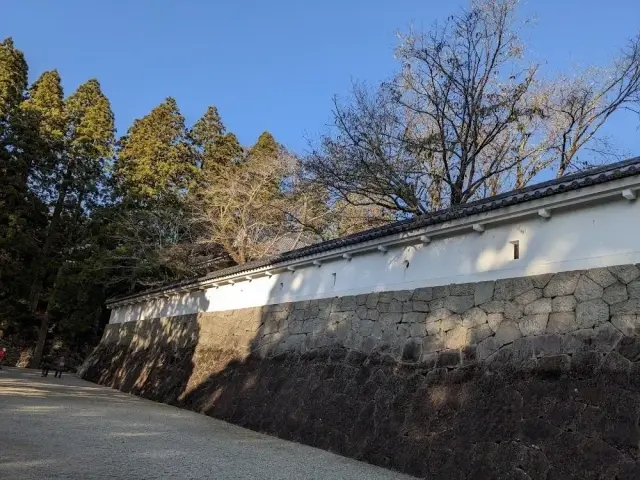https://www.dekitabi.com/itinerary/miyazaki-day-trip-obi-castle-town
Nichinan City, nestled in Miyazaki Prefecture, is a treasure trove of historical and cultural landmarks. Among its gems are the Obi Castle Ruins, the Obi Castle History Museum, and the Obi Traditional Buildings Preservation District. Each of these sites offers a unique glimpse into Japan’s rich heritage and provides visitors with an enriching experience.
Obi Castle Ruins: Echoes of a Feudal Past

https://www.dekitabi.com/attraction/obi-castle
The Obi Castle Ruins, or “Obi-jō” in Japanese, are a captivating testament to the architectural and strategic prowess of Japan’s feudal era. Originally built in the early 16th century by the Ito clan, Obi Castle played a crucial role in the region’s history. The castle’s design, with its stone walls and moats, reflects the military ingenuity of its time.
Today, the ruins offer a picturesque and evocative setting. While the original structures are no longer standing, the remnants of the castle’s walls and gates, along with the extensive moats, still convey the grandeur and scale of the historical site. Walking through the ruins, visitors can imagine the bustling life that once thrived within these ancient walls. The scenic views from the castle grounds also provide an excellent vantage point to appreciate Nichinan City’s natural beauty.
Obi Castle History Museum: A Journey Through Time

https://www.dekitabi.com/attraction/obi-castle-museum
Just a short distance from the ruins, the Obi Castle History Museum offers an in-depth exploration of the castle’s history and the broader context of the Ito clan’s influence. This well-curated museum features an array of artifacts, including samurai armor, traditional weapons, and historical documents. These exhibits provide valuable insights into the lives of the samurai who once inhabited Obi Castle and the political dynamics of the period.
The museum’s displays are thoughtfully arranged to guide visitors through the evolution of the castle and its significance within the region. Interactive exhibits and detailed explanations make it a fantastic destination for history enthusiasts looking to deepen their understanding of Japan’s feudal past. The museum also hosts special exhibitions and educational programs, offering a dynamic experience for visitors of all ages.
Obi Traditional Buildings Preservation District: A Glimpse into Edo Period Architecture

https://www.dekitabi.com/attraction/obi-castle-town-traditional-district
Adjacent to the castle and museum, the Obi Traditional Buildings Preservation District is a charming area where time seems to stand still. This historic district has been carefully preserved to showcase the traditional architecture and urban planning of the Edo period (1603-1868). Strolling through the district, visitors are greeted by beautifully maintained buildings, including merchant houses, samurai residences, and old townhouses, all of which exude a sense of nostalgia and historical authenticity.
The district’s layout and architectural style reflect the prosperity of the era and the cultural influences that shaped Nichinan City. Many of the buildings feature classic elements such as wooden facades, tiled roofs, and traditional shopfronts. Some buildings have been converted into museums, tea houses, and craft shops, offering visitors a chance to experience traditional Japanese culture firsthand.
Practical Tips for Visiting Nichinan City
- Best Time to Visit: The best time to explore Nichinan City is during the spring and autumn months when the weather is mild, and the natural scenery is at its most vibrant. The cherry blossoms in spring and the autumn foliage create a stunning backdrop for your visit.
- Getting There: Nichinan City is accessible by train and bus from major cities in Miyazaki Prefecture. The journey offers scenic views of the countryside, enhancing the overall travel experience.
- Local Cuisine: Don’t miss out on local delicacies, including fresh seafood and regional specialties, which can be enjoyed at various restaurants and eateries throughout the city.
- Cultural Etiquette: When visiting traditional sites, it’s important to be respectful of local customs and practices. Dressing modestly and following any specific guidelines provided at each site will help ensure a positive experience.
Conclusion
Obi Castle Ruins, the Obi Castle History Museum, and the Obi Traditional Buildings Preservation District collectively offer a rich tapestry of historical and cultural experiences. From the evocative remains of the castle to the immersive exhibits of the museum and the charming preservation district, Nichinan City provides a fascinating journey through Japan’s past. Whether you are a history buff, a culture enthusiast, or simply someone looking to explore Japan’s heritage, these sites offer something for everyone.
Embark on a journey to Nichinan City and immerse yourself in the historical splendor of Obi Castle and its surroundings.


Leave a Reply